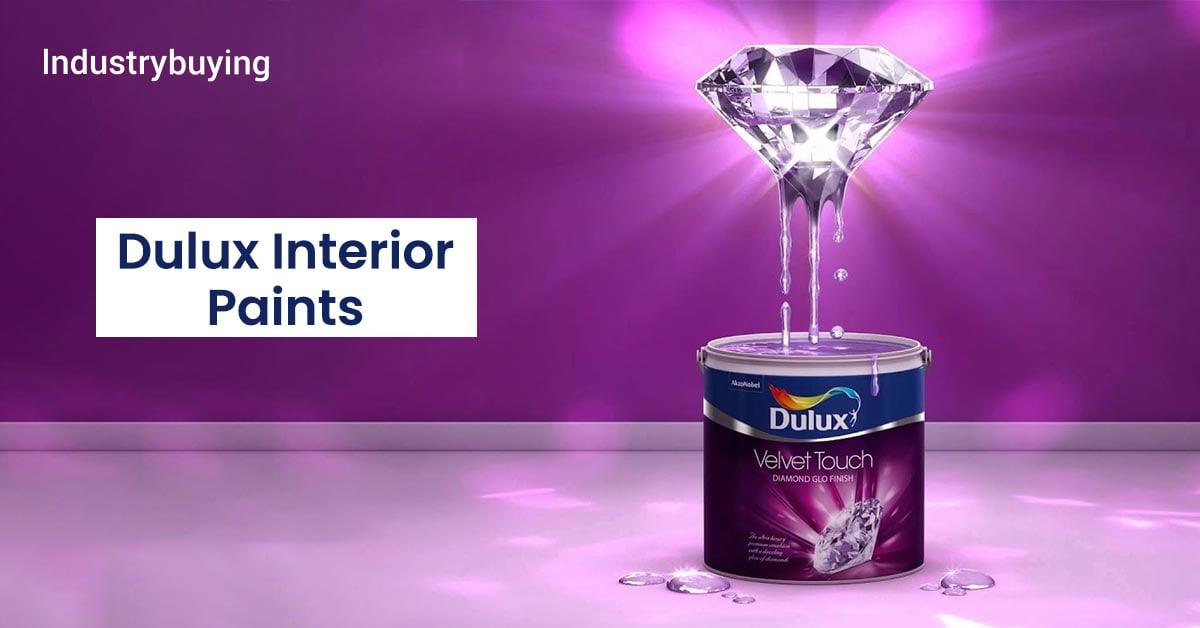Different Types of Paints and Their Applications

Last Updated on October 11, 2024
Designing your office or home requires the perfect finishing of paints for an ambience that directly reflects the style and purpose of the space. Paints are used not only for the look but also to increase the durability of the surface. When choosing the paint, you must consider several factors, such as the finish and the type of surface it is used for, among other properties discussed in this article. So, it is important to know about the different types of paints available in the market and which one best suits your needs.
Types of Paints Based on Mixing Material
Based on the material used to mix the paint for application, paints are classified into oil- and water-based paints. Let’s look at the characteristics of both types of paints.
| Parameters | Oil Based Paints | Water Based Paints |
| Mixing Ingredient | Requires to be mixed with turpentine oil or paint thinner for applications | Requires only water for application |
| Drying Time | It takes longer to dry | Dries quickly |
| Colour Fading | Colour may change with time | Minimal or no change in colour with time |
| Application | Ceilings, doors, windows, furniture, etc | Interior & exterior walls |
Types of Paints
Before choosing paint for your business requirements, you need to understand the varieties available in the market. There are different kinds of paint for walls, indoor decor, and speciality paints. It may get overwhelming, but don’t worry; this guide will clear all your doubts about making the right choice for your space.
1. Oil Paint
Oil paint needs a mixing agent such as turpentine or linseed oil. It is durable and provides a rich finish. Three coats are required to effectively apply oil paints: primer, undercoat, and finish coat. However, the drying time for oil paint is longer, often more than 24 hours.
Application and Benefits of Oil Paint
- Oil paints are suitable for doors, walls, windows, and wooden & metal surfaces.
- Suitable for non-humid areas as the drying time is long.
- Cleaning is easy.
- Provides good adhesion.
2. Emulsion Paint
Emulsion paints are water-based paints. They are made by mixing binding agents polyvinyl acetate and polystyrene with driers such as cobalt and manganese. They provide wider coverage, good colour retention, and corrosion resistance.
Applications and Benefits of Emulsion Paint
- Emulsion paints are suitable for walls (interior & exterior), kitchens, and homes with children and pets.
- Resistant to moulds and UV radiation, it does not fade over time.
- Comes in different finishes such as matte, satin, glossy, eggshell, etc.
- Easy to clean
| Did you know? Emulsion paints have low volatile organic compound content, so they do not emit toxic fumes to the environment. |
3. Cement Paint
Cement paint is highly durable, making it suitable for industrial places such as warehouses or manufacturing industries. It offers good resistance to harsh weather conditions. Cement paint comes in powder form and is mixed with water before application.
Applications and Benefits of Cement Paint
- It can be directly applied to cemented surfaces without needing prep.
- Suitable for rough interiors and exteriors.
- Less expensive and easy to apply.
4. Bituminous Paint
Bituminous paints are industrial paints used to coat underwater structures such as pipes, wood, and irons. It has a black tar-like appearance and is highly alkali-resistant.
Applications and Benefits of Bituminous Paint
- Suitable for water-exposed structures and surfaces.
- Has anti-corrosion and water-proofing properties.
5. Aluminium Paint
Aluminium paint consists of particles of aluminium mixed with oil or varnish. It has high protective and reflective properties, making it suitable for industrial applications. Due to its anti-corrosion and heat resistance properties, it is also suitable for metal surfaces.
Applications and Benefits of Aluminium Paint
- Used for painting hot pipes, oil tanks, hot water tanks, etc.
- It is corrosion-resistant and provides an insulating barrier to the applied surface.
6. Synthetic Rubber Paint
These types of wall paints consist of synthetic resins dissolved in pigments and solvents to achieve the desired colour. Synthetic rubber paints are used to paint walls, concrete surfaces, and floors.
Applications and Benefits of Synthetic Rubber Paint
- It is suitable for large surface areas.
- It dries quickly and is less expensive than other paints.
- It is long-lasting and provides good resistance to weather conditions.
7. Enamel Paint
Enamel paints are produced by mixing lead or zinc with varnish. They have a hard texture and are most commonly used for interior and exterior walls. They are waterproof, chemically resistant, and provide good colour retention.
Applications and Benefits of Enamel Paints
- Suitable for humid and moist surfaces such as bathrooms or kitchens.
- Suitable for metal and wood surfaces.
- Provides a protective coating to the applied surface.
Type of Paint Finishing
Paint finishing is a very important factor to consider because it provides the desired look and feel of the surroundings. There are different types of paint finishes available, such as matte, glossy, satin, etc, which are mentioned below:
1. Matte Paint
Matte paint is one of the most common types of paint for home applications. As matte finishes have gained popularity over the years, they provide a non-glossy finish with a velvety appearance and non-reflecting surface. They come in a wide range of paint colours and give an elegant and sophisticated ambience to the painted space. However, matte paints are harder to clean and less durable.
2. Eggshell Paint
Eggshell paints are best known for their sheen finish, which provides a subtle mix of matte and satin finishes. It is more durable and easy to clean than matte paints. Eggshell finishes are best suited for walls and ceilings as they brighten the room and provide an elegant ambience. They are one of the most popular types of paints for interior walls.
3. Satin Paint
Satin paint retains the look and feel of satin fabric. It is known for providing a matte and silk finish and is glossier than eggshell paints. Satin paints Due to its smoothness, it is easier to clean and can be applied to crowded spaces such as offices, co-spaces, living rooms, kitchens, hallways, and children’s rooms.
4. Semi-Gloss Paint
Semi-gloss paints are shinier than satin paints. They offer high durability and reflection. The most common applications for semi-gloss paints are doors, bathrooms, and kitchens.
5. Gloss Paint
Gloss paint is the shiniest and most durable type of paint. It is commonly used for doors, furniture, cabinets, and drawers.
Type of Paints With Specific Features: Specialty Paints
Speciality paints offer unique applications and finishes. These include chalkboard paint, magnetic paint, textured paint, anti-mould paints and more.
1. Chalkboard Paint
These paints provide a chalkboard finish. They are suitable for conference rooms in offices where brainstorming sessions can be conducted using the painted wall as a board. They are durable and easy to clean. They are also suitable for kids’ rooms, as they often scribble on walls with crayons.
2. Magnetic Paint
These paints provide a magnetic surface. They can be used in offices, kitchens, and meeting rooms to attach notes and Post-its without having to nail or tape the wall.
3. Textured Paint
Textured paints create patterns or textures by providing depth and dimension to walls, creating a 3D effect. They can be used to create patterns of stone, bricks, or other materials.
4. Anti-Mould Paint
It is suitable for areas where moisture is high, like the pantry in offices, kitchens, and bathrooms. It is resistant to mould, ensuring contamination-free surfaces.
Conclusion
When selecting the right type of paint for your business or home needs, you should always consider finishes, durability, resistance to weather conditions, ambiance requirements, and budget. Paints are broadly classified based on mixing material, finishing, and suitability. This article has all the details you need to make an informed decision. At Industrybuying, you can find a wide range of paints and brands that offer quality and durability. Plus, if you have any questions or doubts, our experts are always available to help you make the right choice.


